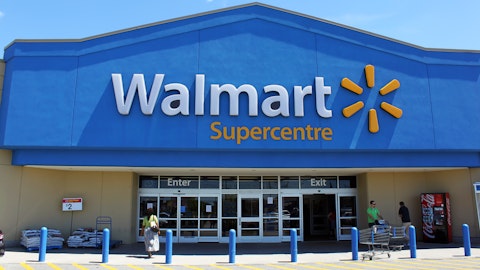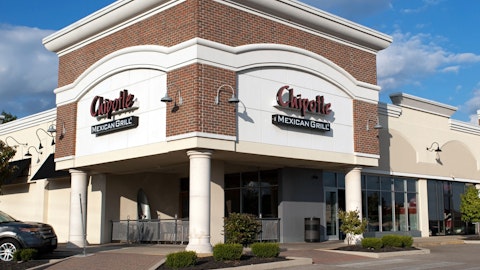Dividend Safety Analysis: Wal-Mart Stores, Inc. (NYSE:WMT)
We analyze 25+ years of dividend data and 10+ years of fundamental data to understand the safety and growth prospects of a dividend. Wal-Mart’s dividend and fundamental data charts can all be seen by clicking here.
Our Dividend Safety Score answers the question, “Is the current dividend payment safe?” We look at factors such as current and historical EPS and FCF payout ratios, debt levels, free cash flow generation, industry cyclicality, ROIC trends, and more.
Dividend Safety Scores range from 0 to 100, and conservative dividend investors should stick with firms that score at least 60. Since tracking the data, companies cutting their dividends had an average Dividend Safety Score below 20 at the time of their dividend reduction announcements.

We wrote a detailed analysis reviewing how Dividend Safety Scores are calculated, what their track record has been, and how to use them for your portfolio here.
Despite its struggles for growth, Wal-Mart’s dividend remains extremely secure with a Dividend Safety Score of 99.
Wal-Mart’s strong safety score begins with its healthy payout ratios. The company’s dividend has consumed just 43% and 28% of its GAAP earnings and free cash flow, respectively, over the last 12 months.
Looking longer term, we can see that Wal-Mart’s free cash flow payout ratio has remained fairly steady over the last decade:

Source: Simply Safe Dividends
While Wal-Mart’s underlying earnings might struggle to grow for the next year or so, they are unlikely to see a meaningful decline as well. In other words, Wal-Mart’s low payout ratios give the company great flexibility to continue paying (and modestly growing) its dividend.
The dividend is also supported by Wal-Mart’s reliable free cash flow generation. Despite sluggish growth in recent years, Wal-Mart’s mature business model continues throwing off record free cash flow. As new store capital expenditures continue to slow, free cash flow should remain solid even despite higher investments in e-commerce operations.

Source: Simply Safe Dividends
Return on invested capital, or ROIC, is another important financial metric I look at to analyze a company. Businesses that earn a high and stable ROIC have better potential to record strong earnings growth because every dollar invested results in more profits. Furthermore, many companies with high returns often have some sort of moat, which helps a business pay dividends more reliably.
Wal-Mart has maintained a solid double-digit ROIC for many years. However, we can see its ROIC has declined more recently due to growth pressures, rising labor costs, and expensive e-commerce investments. Still, Wal-Mart’s ROIC is at a healthy level that supports its business quality.

Source: Simply Safe Dividends




